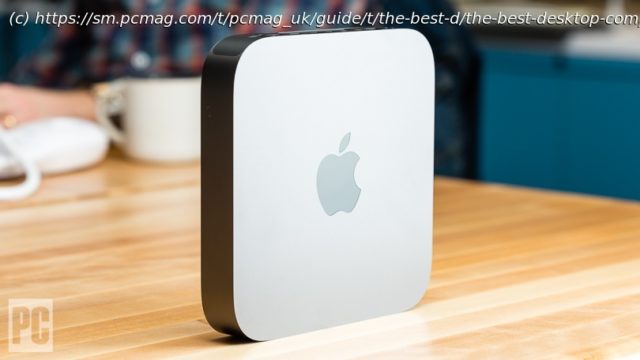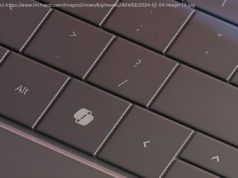Whether hulking towers, sleek all-in-ones, or space-saving mini PCs, today’s desktops pack neater designs and more value than ever. Check out our recent favorites based on our deep-dive reviews, along with all the in-depth shopping advice you need.
Smartphones are ubiquitous and astonishingly capable. Snazzy, innovative laptop designs are constantly evolving. So where does that leave the venerable desktop PC? You’ll find plenty of them for sale, to be sure, and innovation never stops in the desktop market. But more people now than ever consider desktops an anachronism, heading straight to the laptop aisle instead for their next computer purchase. It’s not always the right move. Rumors of the demise of the desktop PC have been greatly exaggerated, year after year, for at least a decade now. Desktops aren’t facing extinction, and they are doing anything but standing still. Consumers and businesses alike should still consider buying one, because their advantages of old still ring true today: Forty years after they ignited the personal computing revolution and the internet age, they’re still the most cost-effective, customizable, and easy-to-upgrade computers you can own. Despite these advantages, a desktop isn’t necessarily better than a laptop or tablet for everyone, especially if your main computing life consists of basic typing and surfing tasks done on the living-room couch. For many others—especially small businesses, families, creative professionals, gamers, and tech tinkerers—desktops are often the best choice and the best value. While desktops don’t come in as many distinct form factors as laptops do, there is great variation in computing power and room for upgrades among them. Let’s consider these, and a bunch of other important factors, in this guide to buying a desktop. First Move: Take Stock of Your Budget One of the desktop’s most alluring promises is the value it delivers. Your money simply goes further with desktop PCs and their components. Instead of buying a $700 laptop with a competent Intel Core i5 processor, you can get a $700 desktop with a more powerful Core i7 CPU in it, and maybe even squeeze in a dedicated graphics card. You can find complete mini PCs for very light work and display-signage tasks for under $300, and perfectly serviceable small towers for $300 to $600. Gaming desktops with dedicated graphics cards start at around $500. You can also find all-in-one desktops, with the display and all of the computing components built into a single device, starting at around $400. The thing with desktops is, opting for a cheap one does not carry some of the same risks you’d face with a like-priced laptop. A $250 Black Friday special or a steeply discounted refurbished desktop could perform just fine for basic computing, and you wouldn’t need to worry about the wear and tear on cheap materials that you might with a laptop of a similar price. That inexpensive laptop would be subject to the vagaries of daily commuting and the occasional drop from a coffee table. The desktop, in contrast, would need to stay put and just work. At the top end of the market are business workstations, tricked-out gaming rigs, and magnificently engineered all-in-one PCs that cost several thousand dollars. Not only will a $3,000 gaming tower offer immense computing power today, but it should come with so much room for expansion and potential for upgradability that its useful life will be far longer than any laptop’s. And that’s before you even delve into the wild world of custom PCs: automotive-grade paint jobs, liquid cooling, and fanciful lighting and wiring. IT-manageable, security-conscious business desktops—most of them nowadays made by Dell, HP, and Lenovo—have their own pricing dynamic and tend to cost more, all else being equal. That’s because of their premium warranty or support plans, as well as the possible addition of enterprise-specific silicon focused on manageability or security. Sometimes, part of the cost premium of business desktops reflects the PC maker’s guarantee that it will stock replacement components and upgrades for that line of machines for a fixed future period. That allows IT pros to count on the ability to continue servicing a fleet of a given business machine over that stretch of time. Settle on an Operating System The Mac vs. PC debate is one of the oldest in modern technology, and we’re not going to pick a side or try to settle that particular religious war here. But if you’re not wedded to one or the other by years of habit (or the peripherals and software you own) and are open to switching, here’s a quick rundown of your choices. Windows 10 is the latest iteration of Microsoft’s operating system. Desktops that use it and previous versions of the OS are what most people typically rely on, so you’ll be assured of the best compatibility and the widest selection of third-party software. Desktops running Windows 10 are also readily available below $500, making them attractive to casual users, families looking for a second PC, and bargain hunters. Macs are an excellent choice if you’re already in an Apple-centric household, since they offer seamless compatibility with iPads and iPhones, including the ability to send and receive messages on any device connected to your iCloud account. The cost of entry will be higher than with the least expensive PCs, however. Google’s Chrome OS is a viable alternative to Windows and macOS, but desktops running it (called Chromeboxes) are rare and best suited to niche uses like powering a restaurant menu display. A fourth option is to buy a desktop with no operating system at all and install an open-source one of your choosing, such as Ubuntu Linux. We don’t recommend going this route unless you’re technically savvy, willing to experiment, and okay fixing software compatibility issues and other quirks. What Desktop Form Factor Do You Need? Macs and Windows PCs are available in all three of the major desktop form factors: mini PCs that can fit on a bookshelf, sleek all-in-ones with built-in (and usually high-resolution) displays, and traditional desktop towers that are bulky but offer room for more or less easy expansion. These three forms each have strengths and weaknesses, and none of them is an obvious best choice for everyone. You’ll have to choose based on what you plan to do with your desktop and where you plan to put it. For truly cramped quarters or light workloads, as well as for people who love the efficient use of space, a mini PC could be the best choice. They come in sizes ranging from tiny sticks not much larger than a USB thumb drive to small-form-factor (SFF) towers that may be nearly a foot tall but have compact footprints. The very smallest sizes have the benefit of disappearing behind an HDMI-equipped monitor or TV, and they contain a processor, memory, storage, and ports to hook up keyboards and mice. They’re economical and power-efficient, and can serve as adequate web browsing or multimedia viewing platforms. But know that the models at the truly tiny end of the scale offer no room for adding extra internal components, and their preinstalled parts are usually difficult or impossible to upgrade. That said, you can find a fair mix of what qualify as mini PCs that do offer the ability to customize or upgrade components. Models based on or inspired by Intel’s Next Unit of Computing (NUC) platform can be as small as 5 inches square but still allow for one or two solid-state drives of your choosing, and the ability to choose and install your own RAM. They’re bigger than the « stick »-style PCs but much more flexible. Traditional tower desktops offer even more flexibility, but also a lot more bulk. Nowadays, the differences between midsize and full-size towers are less well-defined, and some of the new PC case designs—from cubes to glass boxes—defy easy categorization. Still, nearly all desktop towers have generous amounts of interior space and full-size (a.k.a. ATX) motherboards, so you can install one or more (sometimes, many more) secondary storage drives, more RAM in empty slots on the motherboard, a video card if one isn’t installed, and in some remote cases, even a second graphics card for extreme gaming or graphics-accelerated tasks. (Note that not all desktop mini towers and towers can take a graphics upgrade. That is where reviews come in.) An all-in-one (AIO) desktop is quite a different animal than both of these form factors. An AIO can save you some space, since the display is built in. An AIO’s value proposition comes down to space saving and whether you happen to be shopping for a desktop display at the same time. Though you can find budget AIOs with basic feature sets, lower resolutions, and non-touch screens, many new models offer touch-enabled screens, and some AIO panels have exceptionally high native resolutions of 4K (3,840 by 2,160 pixels) or even 5K (5,120 by 2,880 pixels). Touch displays make them excellent choices for watching movies or serving as a multimedia hub in the kitchen or other public area of your home, though the very highest resolutions target content creators rather than consumers. With a few exceptions for business-oriented models, you will give up a lot of room for expansion in an AIO versus traditional desktop tower. Cracking open an AIO for an upgrade or fix, while not impossible, is a bigger deal than opening the side of a desktop tower. Apple’s late-model iMacs are particularly difficult to open. How Much Processing Power Is Enough? One of the main benefits of a desktop tower is that it will use a desktop-grade CPU. That may sound obvious, but it’s a key distinction. AMD and Intel, the two biggest makers of processors for PCs, offer desktop-class chips and laptop-class chips to system manufacturers, but often the CPU model names are similar and tricky to tell apart.






